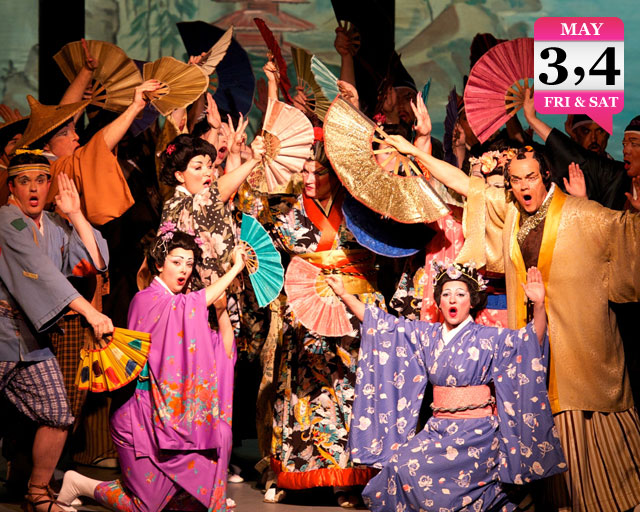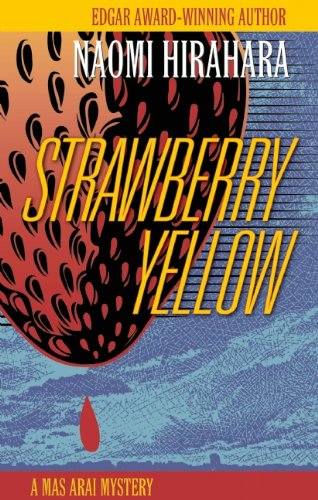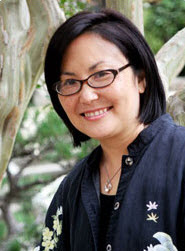

 Bravo to the Bravo TV network. And Bravo to Michael Yaki, a former City of San Francisco supervisor who is now a member of the U.S. Commission on Civil Rights. When Yaki wrote to the network to complain about the use of the term "JAP" to describe a "Jewish American Princess" on a new reality show, "Princesses: Long Island," Bravo agreed immediately to stop using the term, both in its promotions and in the show.
Yeah, yeah, bring out the anti-P.C. police, and tell me that I'm being too sensitive, and that if Jewish people wanna use the term "JAP" they have the right. Let it all out. Vent.
The thing is, not all Jews are OK with the term -- even in the early '80s when the Jewish American Princess term was widely used as a lighthearted (but still ethnic) slur, there were people who thought the term itself was offensive, never mind the acronym.
And pretty much every Japanese American I know cringes at the use of "J-A-P" even if it's used as an abbreviation for Japan, or as an acrobym for Jewish American Princess.
Bravo to the Bravo TV network. And Bravo to Michael Yaki, a former City of San Francisco supervisor who is now a member of the U.S. Commission on Civil Rights. When Yaki wrote to the network to complain about the use of the term "JAP" to describe a "Jewish American Princess" on a new reality show, "Princesses: Long Island," Bravo agreed immediately to stop using the term, both in its promotions and in the show.
Yeah, yeah, bring out the anti-P.C. police, and tell me that I'm being too sensitive, and that if Jewish people wanna use the term "JAP" they have the right. Let it all out. Vent.
The thing is, not all Jews are OK with the term -- even in the early '80s when the Jewish American Princess term was widely used as a lighthearted (but still ethnic) slur, there were people who thought the term itself was offensive, never mind the acronym.
And pretty much every Japanese American I know cringes at the use of "J-A-P" even if it's used as an abbreviation for Japan, or as an acrobym for Jewish American Princess.
 I recently blogged about a video produced by the City of Los Angeles – using taxpaper money – that was originally produced with good intentions: Explaining the importance of recycling water. But to make its point, the video used a ghastly, stereotypical caricature of geishas played by non-Asians with painted faces wearing kimonos, including one played by a non-Asian man. Of course, they spoke in “ching-chong” Japanesey accents.
It's disturbing that it's OK even in 2013 to caricature Asians with the most shallow racial stereotypes -- ones that have been used to depict us for 150 years.
There’s a long tradition in Hollywood and show business in general of “yellowface” – non-Asians (usually Caucasians) cast as Asians. The most egregious example is probably the horrid character of Mr. Yunioshi in “Breakfast at Tiffany’s," in which Mickey Rooney played the part to the hilt with buck teeth, thick glasses, squinty eyes and a terrible accent.
But wait, there's more! He played a perverted lech of a photographer who keeps trying to shoot pictures of his downstairs neighbor Holly Golightly (imagine this name pronounced in a horrible fake Japanese accent), played by Audrey Hepburn.
There are many, many examples of yellowface going back to Katharine Hepburn and Marlon Brando playing Chinese and Japanese characters with their eyes taped back in classic films such as “Dragon Seed” and “Tea House of the August Moon,” all the way to last year’s big-budget sci-fi flick “Cloud Atlas,” in which Hugo Weaving (of “Matrix” and "Lord of the Rings” fame) was among the cast who played both white and Asian parts, with hideously phony-looking makeup.
It's not just on the big screen. Yellowface has also been a tradition on the stage, and I happened to see two plays recently that used elements of the practice, with varying results.
Gilbert & Sullivan’s famous 1885 comic opera “The Mikado” is known for its social satire; the musical pokes fun at British politics and society by using Japan as the setting for its wacky love story.
But the Japan it portrays is the Japan that people in the late 1800s fantasized about: Exotic, utterly foreign and just plain strange. To ensure that it only depicts simpleminded stereotypes, W.S. Gilbert based the play on a fictional Japan that had just been opened to Western commerce, but he didn’t bother to do any research to make his portrayal of Japanese culture realistic at all.
Instead, he named the village where “The Mikado” takes place “Titipu” and gave his characters improbably names such as “Nanki-poo” and “Yum-Yum.”
I recently blogged about a video produced by the City of Los Angeles – using taxpaper money – that was originally produced with good intentions: Explaining the importance of recycling water. But to make its point, the video used a ghastly, stereotypical caricature of geishas played by non-Asians with painted faces wearing kimonos, including one played by a non-Asian man. Of course, they spoke in “ching-chong” Japanesey accents.
It's disturbing that it's OK even in 2013 to caricature Asians with the most shallow racial stereotypes -- ones that have been used to depict us for 150 years.
There’s a long tradition in Hollywood and show business in general of “yellowface” – non-Asians (usually Caucasians) cast as Asians. The most egregious example is probably the horrid character of Mr. Yunioshi in “Breakfast at Tiffany’s," in which Mickey Rooney played the part to the hilt with buck teeth, thick glasses, squinty eyes and a terrible accent.
But wait, there's more! He played a perverted lech of a photographer who keeps trying to shoot pictures of his downstairs neighbor Holly Golightly (imagine this name pronounced in a horrible fake Japanese accent), played by Audrey Hepburn.
There are many, many examples of yellowface going back to Katharine Hepburn and Marlon Brando playing Chinese and Japanese characters with their eyes taped back in classic films such as “Dragon Seed” and “Tea House of the August Moon,” all the way to last year’s big-budget sci-fi flick “Cloud Atlas,” in which Hugo Weaving (of “Matrix” and "Lord of the Rings” fame) was among the cast who played both white and Asian parts, with hideously phony-looking makeup.
It's not just on the big screen. Yellowface has also been a tradition on the stage, and I happened to see two plays recently that used elements of the practice, with varying results.
Gilbert & Sullivan’s famous 1885 comic opera “The Mikado” is known for its social satire; the musical pokes fun at British politics and society by using Japan as the setting for its wacky love story.
But the Japan it portrays is the Japan that people in the late 1800s fantasized about: Exotic, utterly foreign and just plain strange. To ensure that it only depicts simpleminded stereotypes, W.S. Gilbert based the play on a fictional Japan that had just been opened to Western commerce, but he didn’t bother to do any research to make his portrayal of Japanese culture realistic at all.
Instead, he named the village where “The Mikado” takes place “Titipu” and gave his characters improbably names such as “Nanki-poo” and “Yum-Yum.”
Jennifer 8 Lee, a NYT reporter who wrote a wonderful book about the origins of Chinese food (specifically the fortune cookie, which is Japanese, not Chinese) called "The Fortune Cookie Chronicles," wrote a HuffingtonPost piece about the way Asian cuisines fuse with American tastes. The essay is worth a read, and the 16-minute video about Chinese food is definitely worth...
Nice work by hip-pop rapper Jason Chu. Memorable wordplay, beats and melody, and a video that appears to be one remarkably loooong camera shot following Chu from a fashion shoot in a warehouse to an alleyway. ...
 I've always been a fan of detective and crime mystery fiction, starting from my earliest days devouring the Hardy Boys and Three Investigators books when I was just a kid. I graduated to author Agatha Christie (including her female sleuth Miss Marple), Ellery Queen and of course, Sir Arthur Conan Doyle's Sherlock Holmes. Then in college I fell in love with the hard-boiled noir novelists, such as Dashiell Hammett and Raymond Chandler.
Among this pantheon of excellent writers and their incredible fictional sleuths, these days I look forward to each new book by Naomi Hirahara in her Mas Arai series.
Arai is a little like Miss Marple -- an unlikely crime-solver in the guise of a senior citizen. But he's unlike everyone else I've read, because he's a 70-something Nisei, or second generation Japanese American who was born in California but spent his childhood in Japan. He survived the bombing of Hiroshima and returned Stateside, where the plot of "Strawberry Yellow" takes root. It starts with the funeral of Mas' second cousin Shug in Watsonville, California, where Mas worked on a strawberry farm upon his return from Japan after WWII. Shug grew up to become a renowned strawberry expert, cultivating new strains.
Mas grew up a little rough around the edges, but became a gardener in Los Angeles, married and had a daughter who's now grown and he lives alone since the death of his wife. He's a crusty old man who avoids conflict and also people, and hates controversy but seems to always find himself in the middle of a murder, or theft, or some other crime. And in spite of his quirky and thorny personality, he solves the problems.
You won't find a sleuth like Mas Arai in the annals of crime fiction.
I've always been a fan of detective and crime mystery fiction, starting from my earliest days devouring the Hardy Boys and Three Investigators books when I was just a kid. I graduated to author Agatha Christie (including her female sleuth Miss Marple), Ellery Queen and of course, Sir Arthur Conan Doyle's Sherlock Holmes. Then in college I fell in love with the hard-boiled noir novelists, such as Dashiell Hammett and Raymond Chandler.
Among this pantheon of excellent writers and their incredible fictional sleuths, these days I look forward to each new book by Naomi Hirahara in her Mas Arai series.
Arai is a little like Miss Marple -- an unlikely crime-solver in the guise of a senior citizen. But he's unlike everyone else I've read, because he's a 70-something Nisei, or second generation Japanese American who was born in California but spent his childhood in Japan. He survived the bombing of Hiroshima and returned Stateside, where the plot of "Strawberry Yellow" takes root. It starts with the funeral of Mas' second cousin Shug in Watsonville, California, where Mas worked on a strawberry farm upon his return from Japan after WWII. Shug grew up to become a renowned strawberry expert, cultivating new strains.
Mas grew up a little rough around the edges, but became a gardener in Los Angeles, married and had a daughter who's now grown and he lives alone since the death of his wife. He's a crusty old man who avoids conflict and also people, and hates controversy but seems to always find himself in the middle of a murder, or theft, or some other crime. And in spite of his quirky and thorny personality, he solves the problems.
You won't find a sleuth like Mas Arai in the annals of crime fiction.
 Along the way, Hirahara, who is herself the daughter of a gardener who was raised in Hiroshima, does a stellar job of accurately and lovingly reflecting her Japanese American (JA) community, including cultural traditions, venerated Japanese values, tangled family ties and the language. That includes not only lots of Japanese terms (she has a handy glossary online of some Japanese terms used in the Mas Arai books), but also capturing the heavily accented English of older JAs.
Along the way, Hirahara, who is herself the daughter of a gardener who was raised in Hiroshima, does a stellar job of accurately and lovingly reflecting her Japanese American (JA) community, including cultural traditions, venerated Japanese values, tangled family ties and the language. That includes not only lots of Japanese terms (she has a handy glossary online of some Japanese terms used in the Mas Arai books), but also capturing the heavily accented English of older JAs.
Here's a conference I wish I could attend, but my schedule and budget don't allow a weekend trip to LA on Saturday, March 23. Organized by the tireless Jeff Yang, who has a long history as a chronicler of Asian America and is currently a columnist for the Wall Street Journal covering AAPI topics in his perfectly titled "Tao Jones"...
This website uses cookies to improve your experience. We'll assume you're ok with this, but you can opt-out if you wish. Read More


